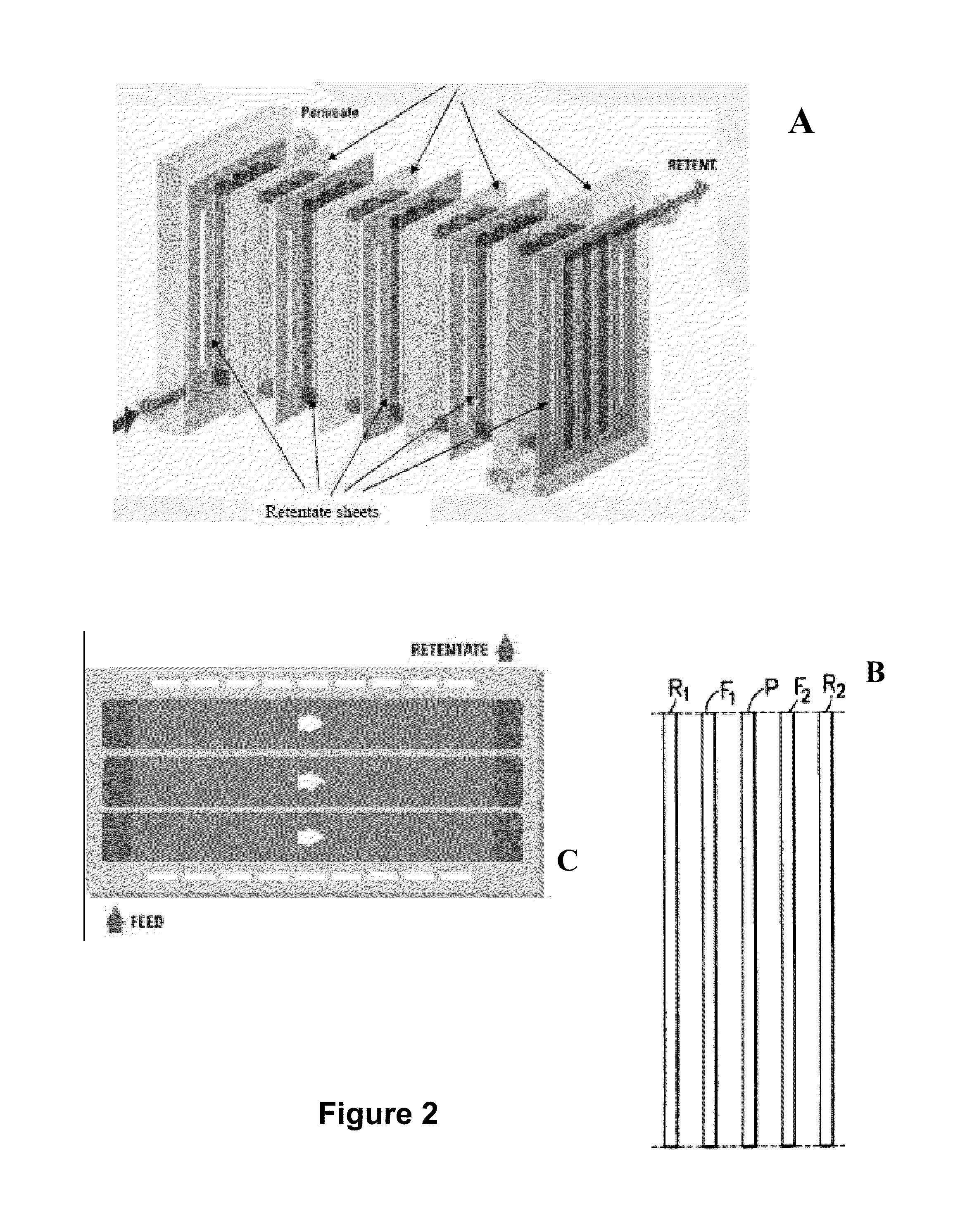Optimization of separation for viscous suspensions
a technology of viscous suspension and separation method, which is applied in the field of viscous source material separation, can solve the problems that large volumes of highly specific therapeutic proteins are neither inexpensive nor readily available, and achieve the effect of maximizing yield and lowering costs
- Summary
- Abstract
- Description
- Claims
- Application Information
AI Technical Summary
Benefits of technology
Problems solved by technology
Method used
Image
Examples
experiment 1
[0222]The purpose of experiment 1 is to demonstrate the passage of the product away from the diluted cell suspension. Experiment 1 is performed at various dilution rates to optimize product recovery, minimize the rate of dilution and maximize the membrane performance in liters per meter square per hour (LMH). The starting material is diluted in a batch mode using different levels of diluent to determine the appropriate dilution and the product is separated from the diluted starting material via constant volume diafiltration. The level of diafiltration is determined.
experiment 2
[0223]The purpose of experiments 2 is to concentrate the permeate of experiment 1. The permeate of experiment 1 contains the product which was separated from the cells by constant volume diafiltration of the cells. The permeate of the separation is concentrated in order to demonstrate recovery of the product and number of passes through MF for acceptable product concentration.
experiment 3
[0224]The purpose of experiments 3 is to concentrate the diafiltered retentate of experiment 1 in order to demonstrate the ability to return the cell mass to the original undiluted volume or less. In other words the purpose of experiment 3 is to show the feasibility of reducing the volume of the process waste stream as well as the ability to recover the diluent. The diluted cellular material is concentrated to the original starting volume or less and number of passes through MF for acceptable concentration.
[0225]Another embodiment for optimization comprises performing experiments 1, 2 and 3 utilizing three (3) different filtration steps (MF, UF of the MF permeate, and UF of cells); followed by a experiment 4 (FIG. 11) which is the simultaneous operation of the MF separation and the UF concentration of the MF permeate fluid.
PUM
 Login to View More
Login to View More Abstract
Description
Claims
Application Information
 Login to View More
Login to View More - R&D
- Intellectual Property
- Life Sciences
- Materials
- Tech Scout
- Unparalleled Data Quality
- Higher Quality Content
- 60% Fewer Hallucinations
Browse by: Latest US Patents, China's latest patents, Technical Efficacy Thesaurus, Application Domain, Technology Topic, Popular Technical Reports.
© 2025 PatSnap. All rights reserved.Legal|Privacy policy|Modern Slavery Act Transparency Statement|Sitemap|About US| Contact US: help@patsnap.com



